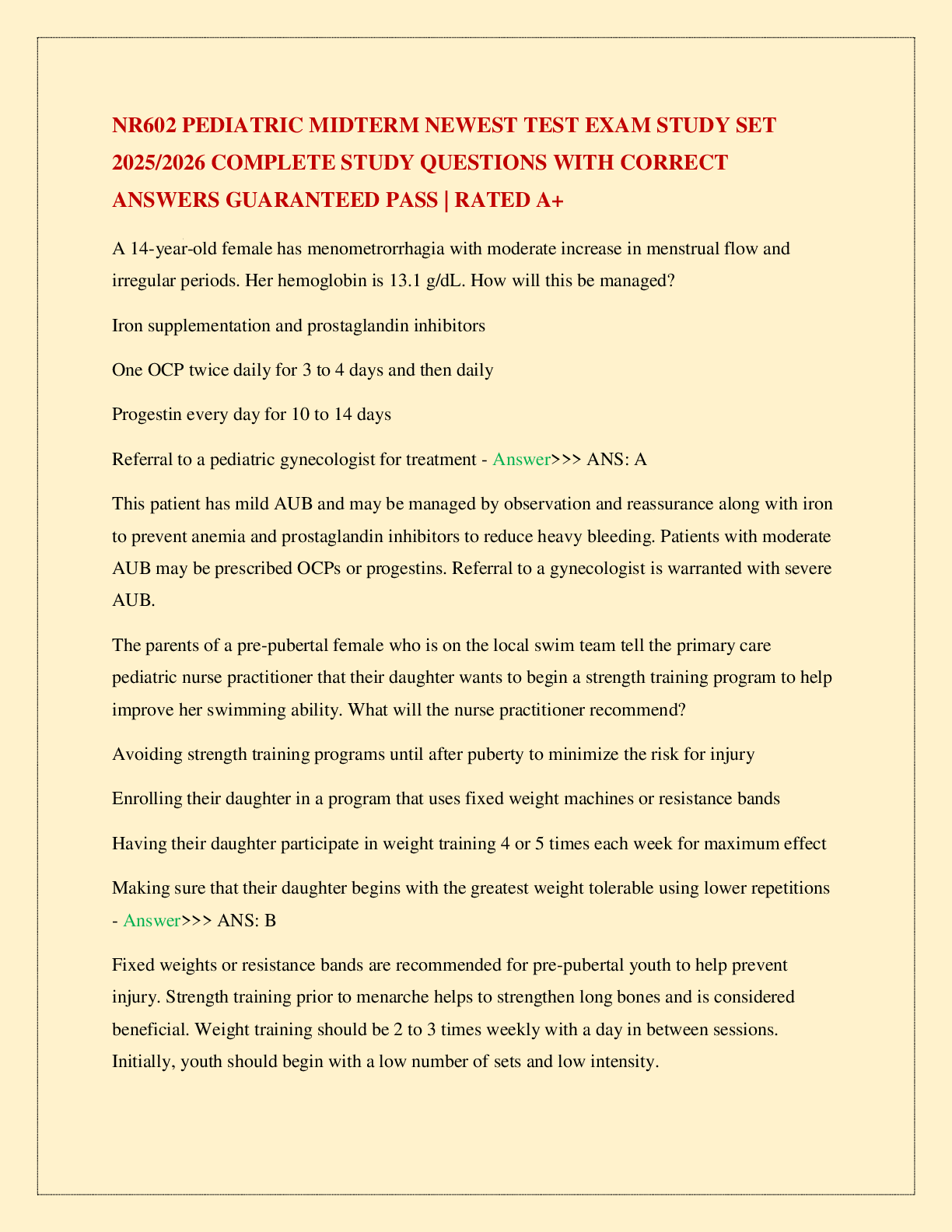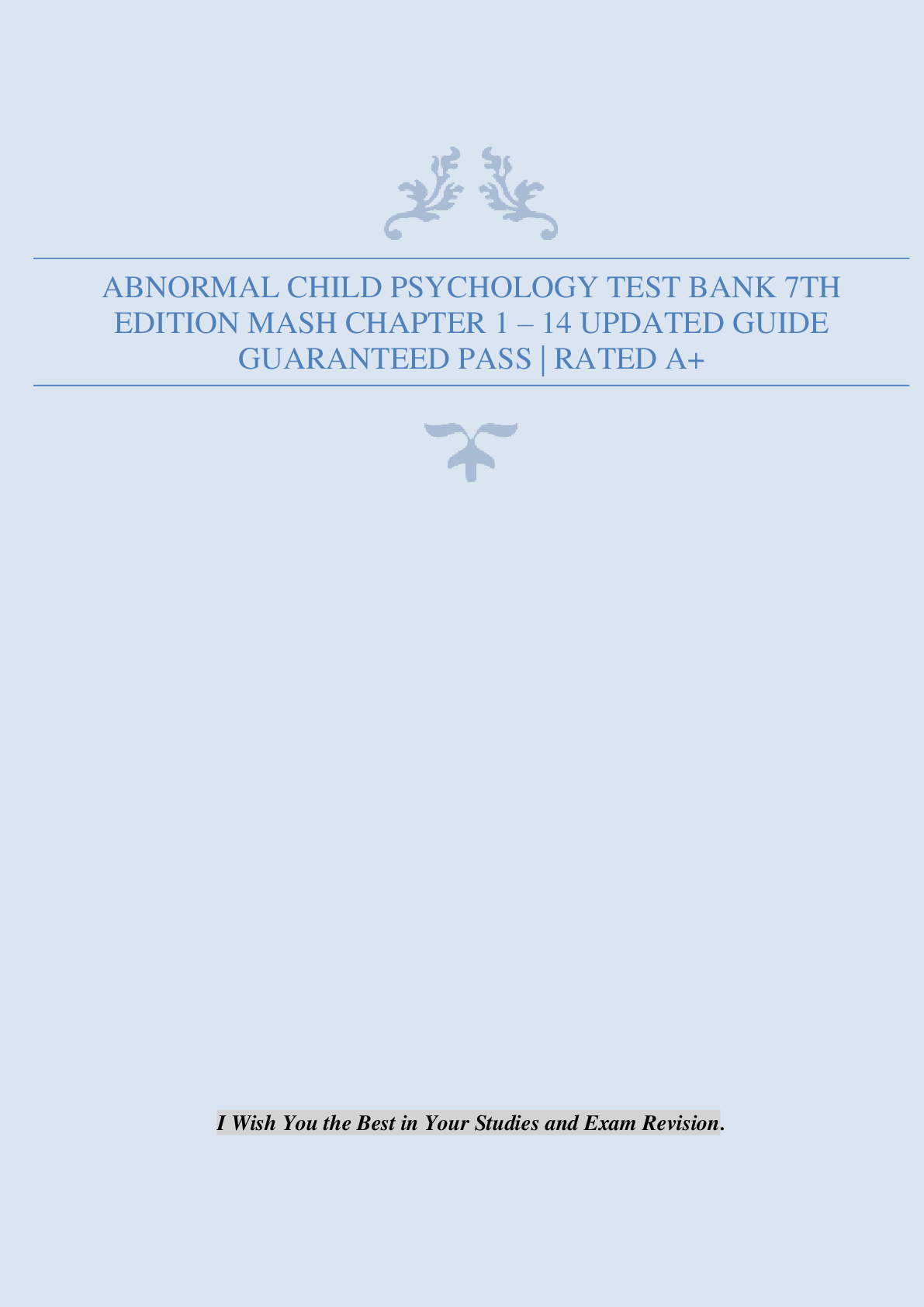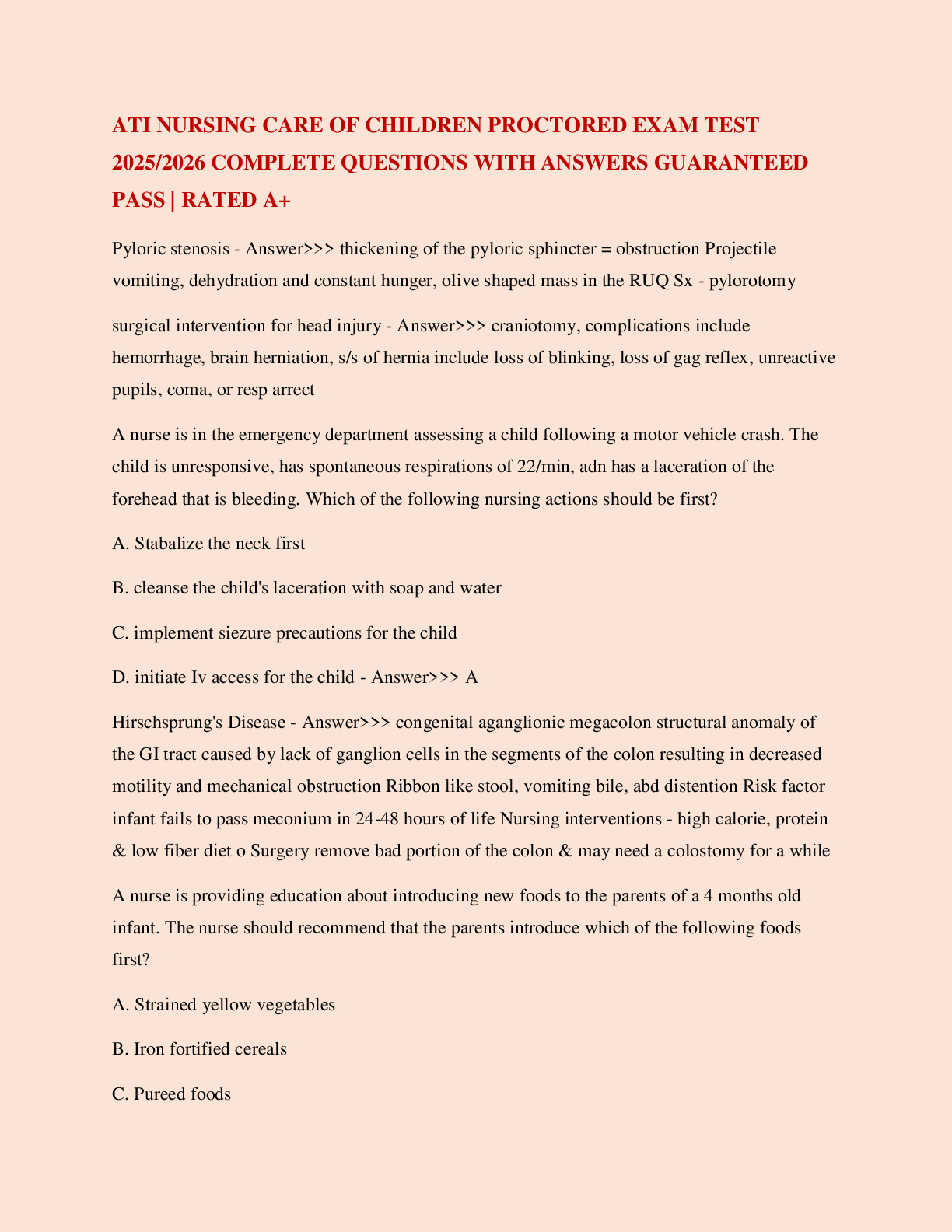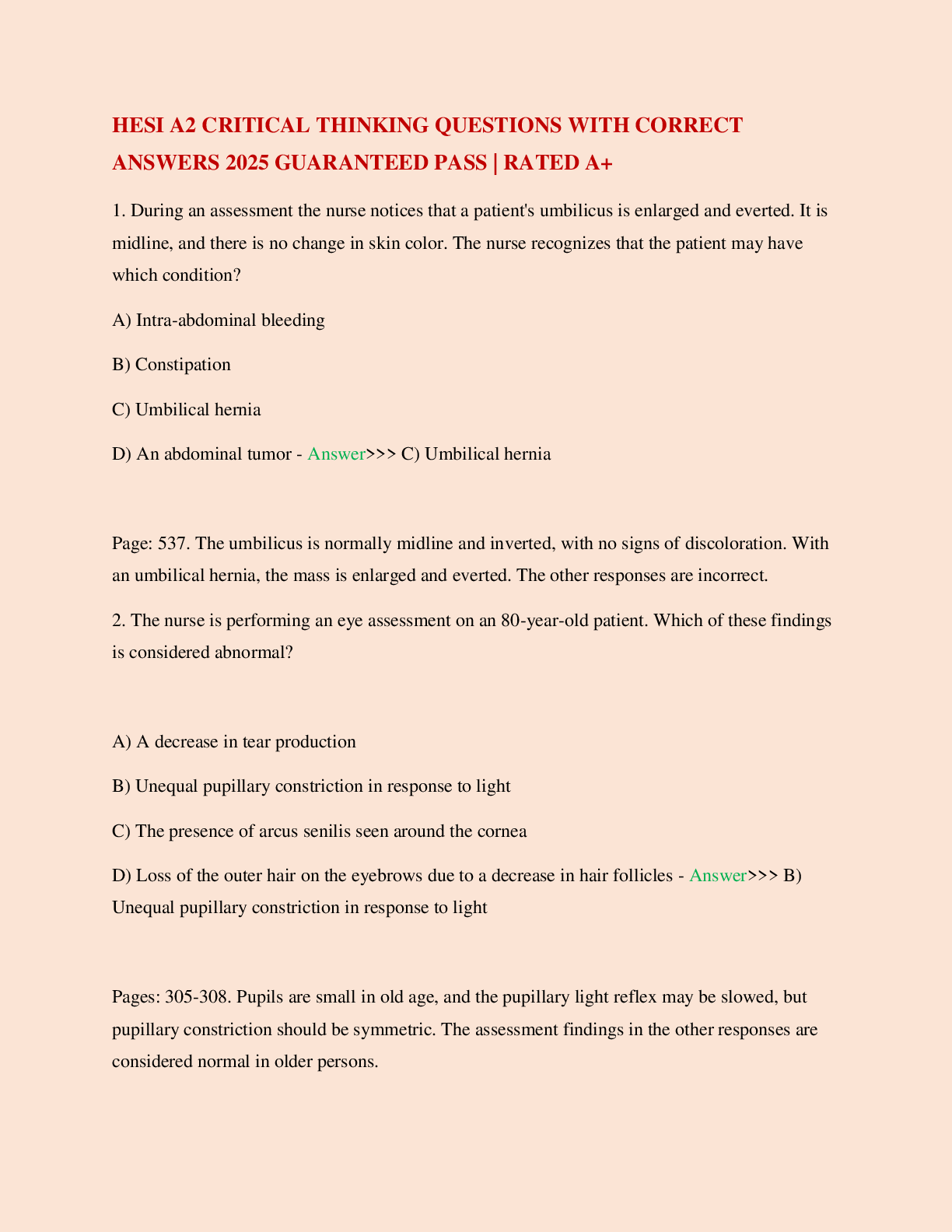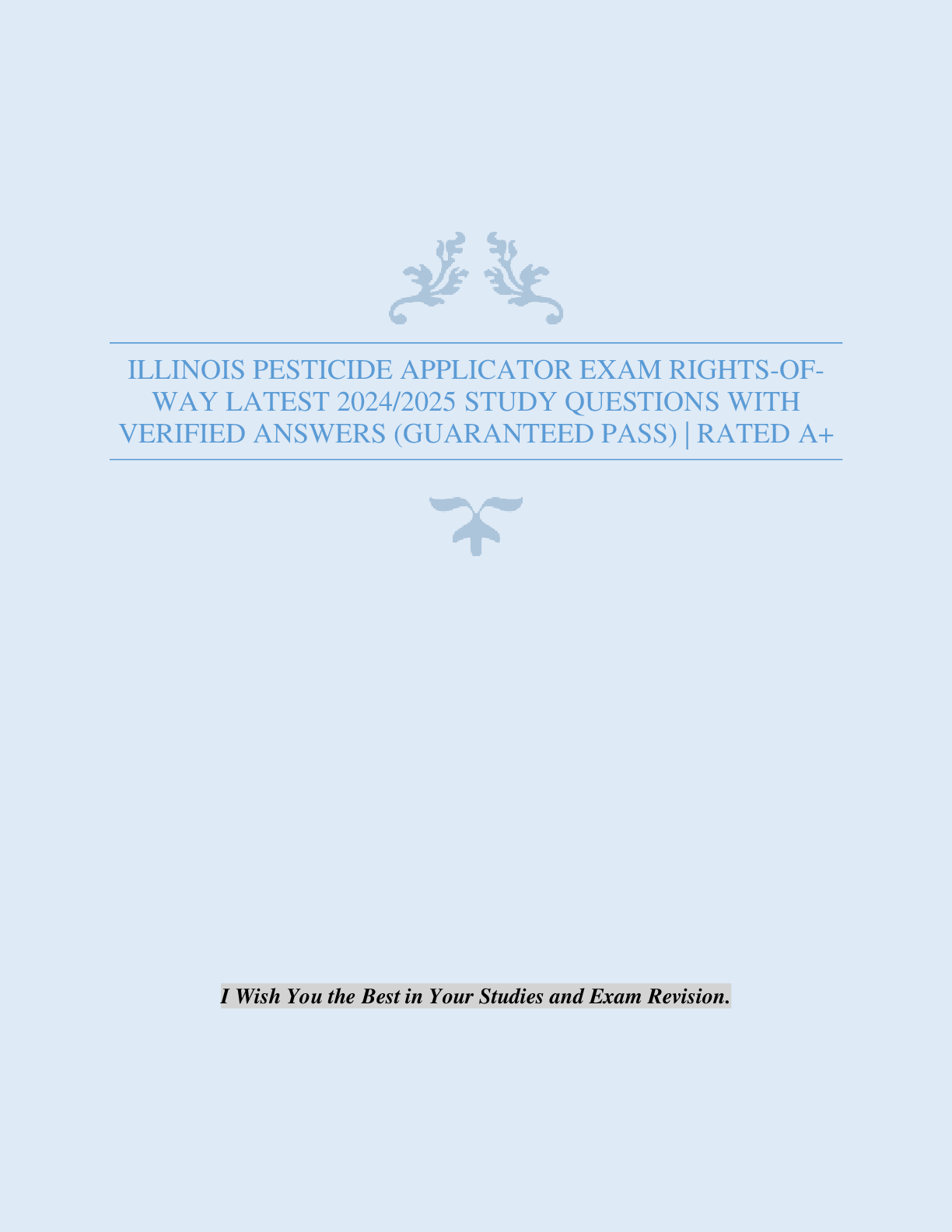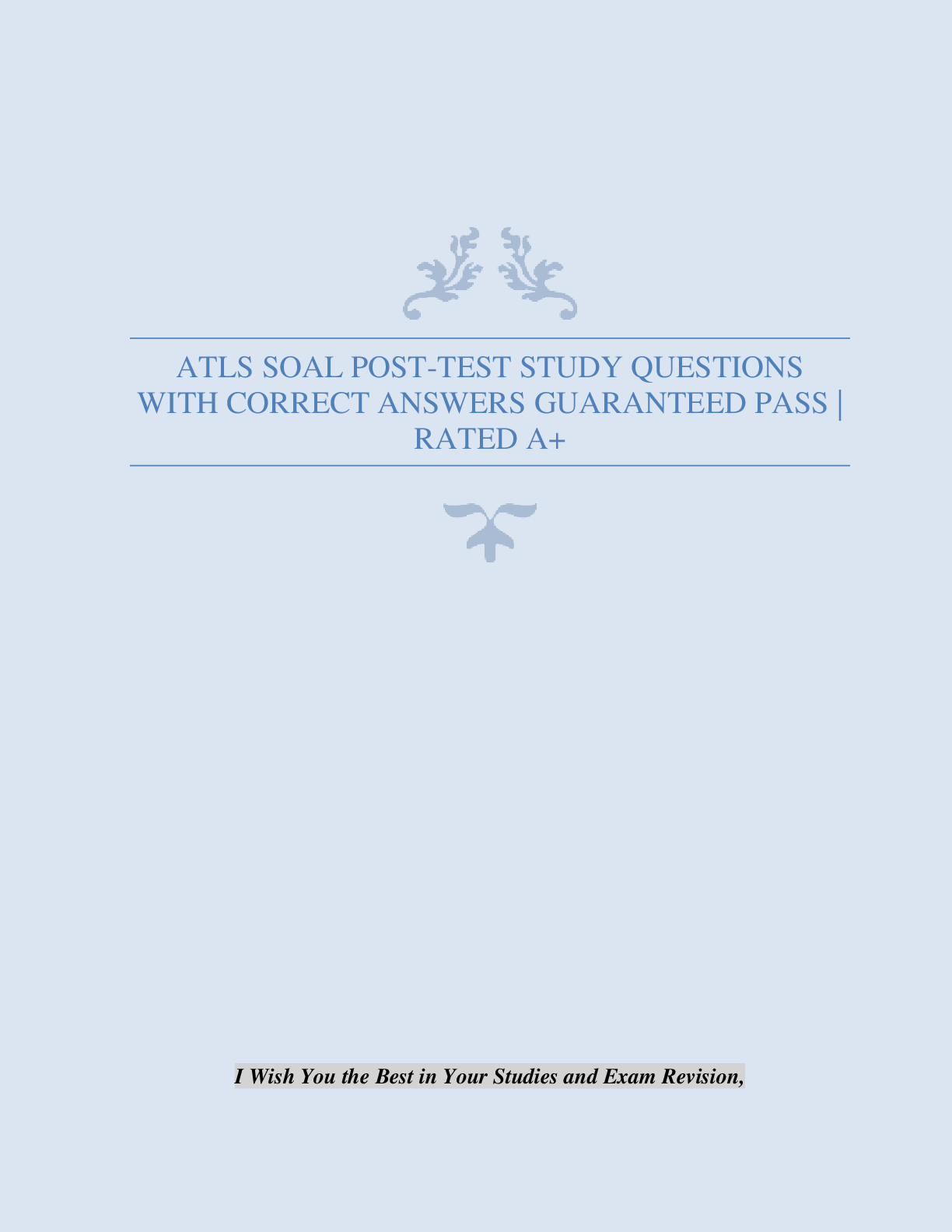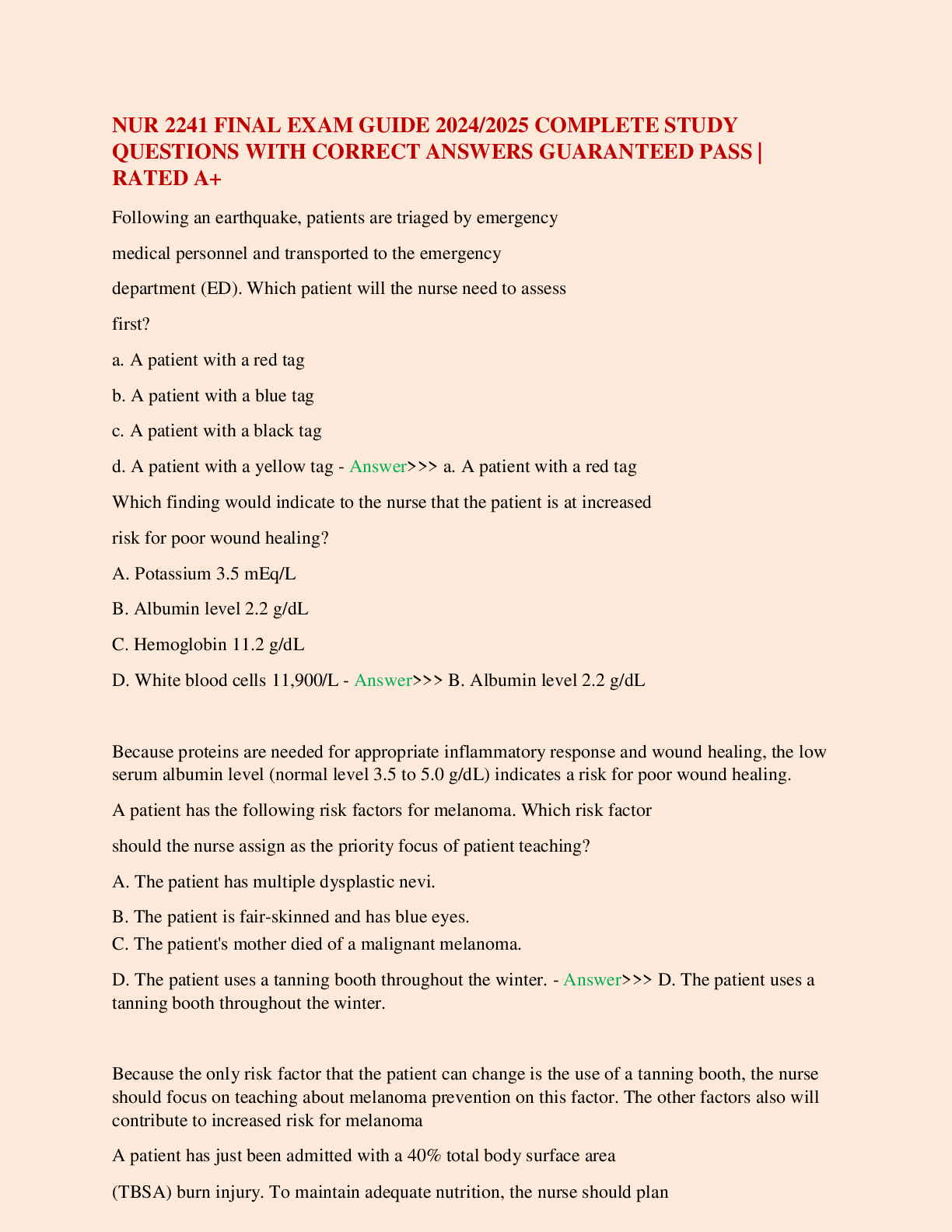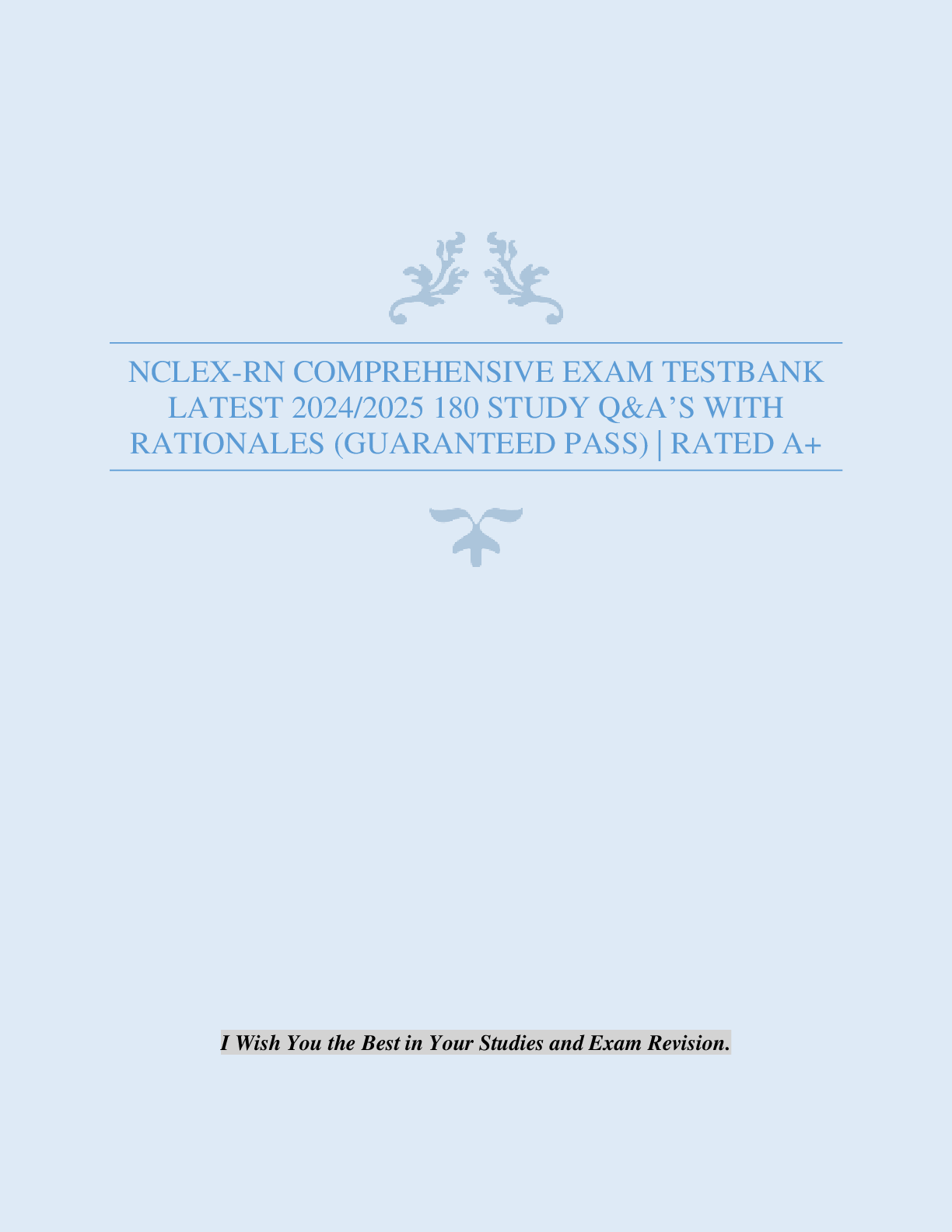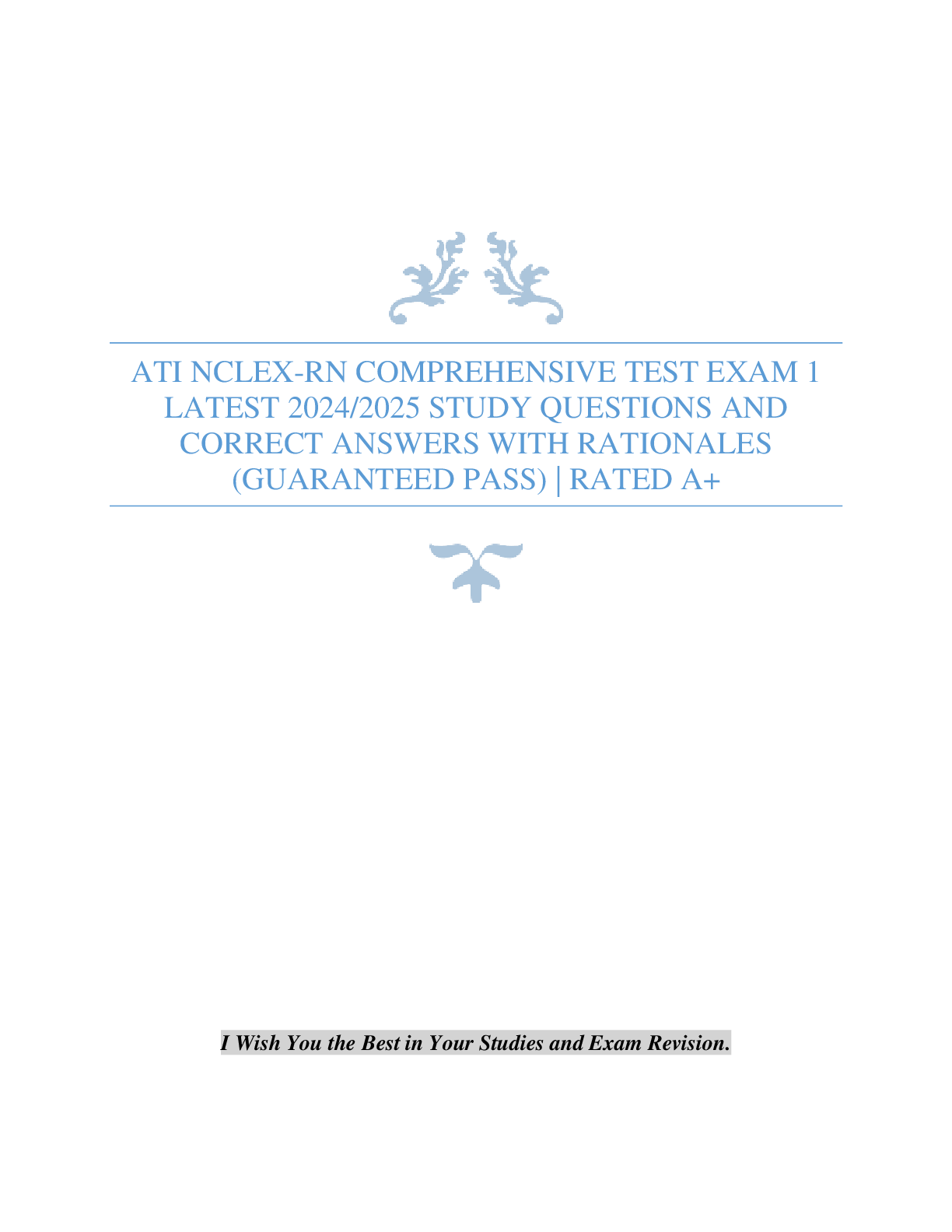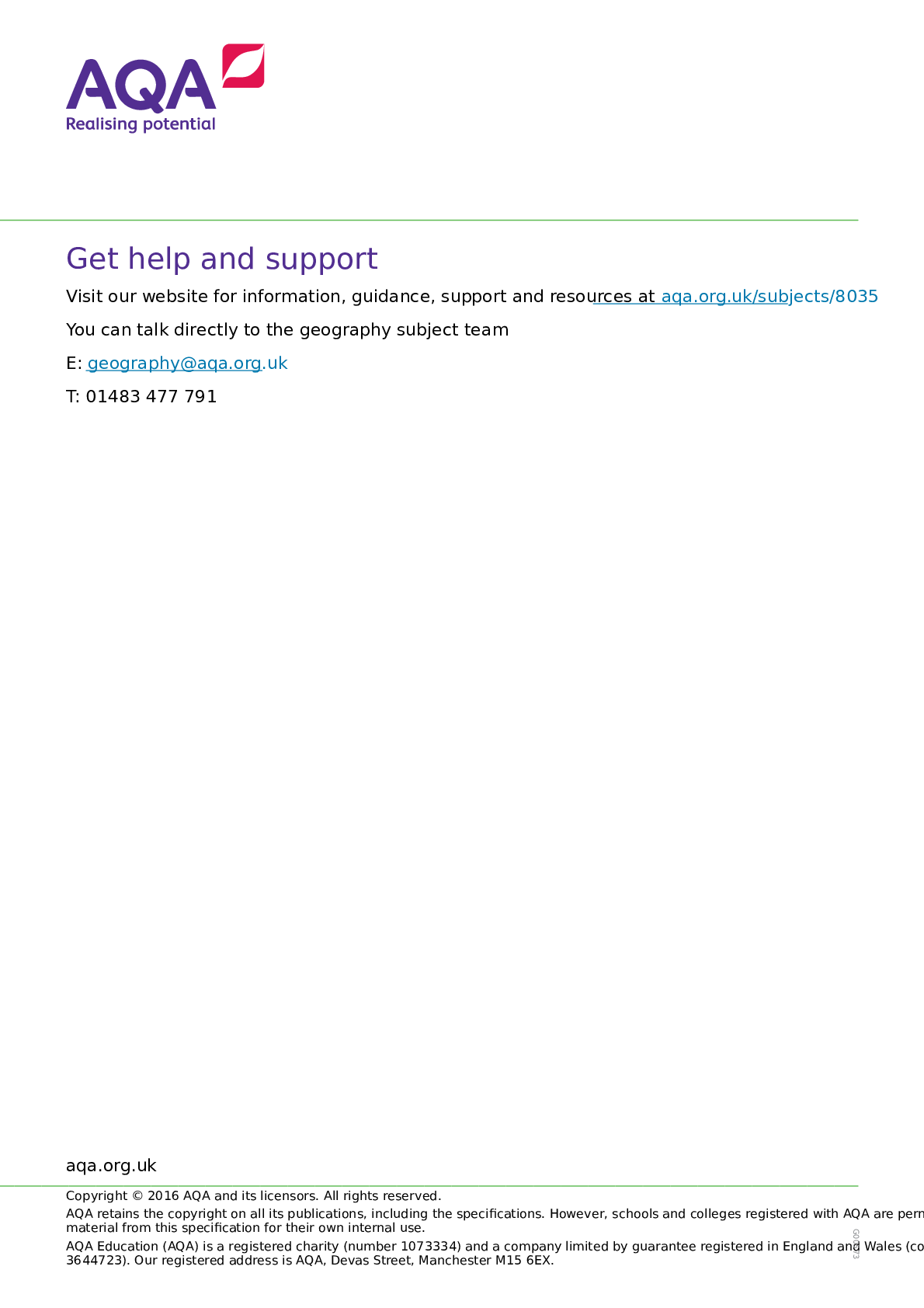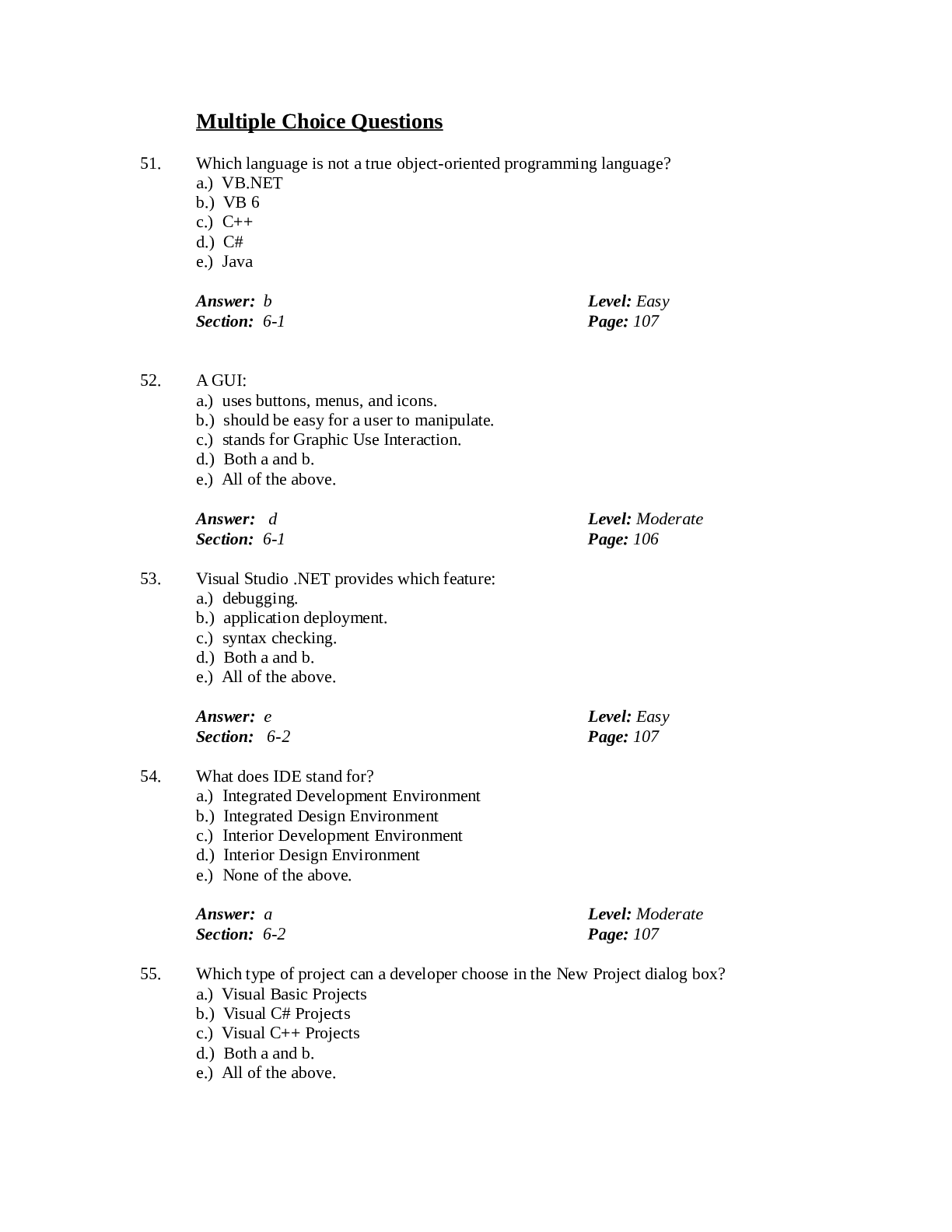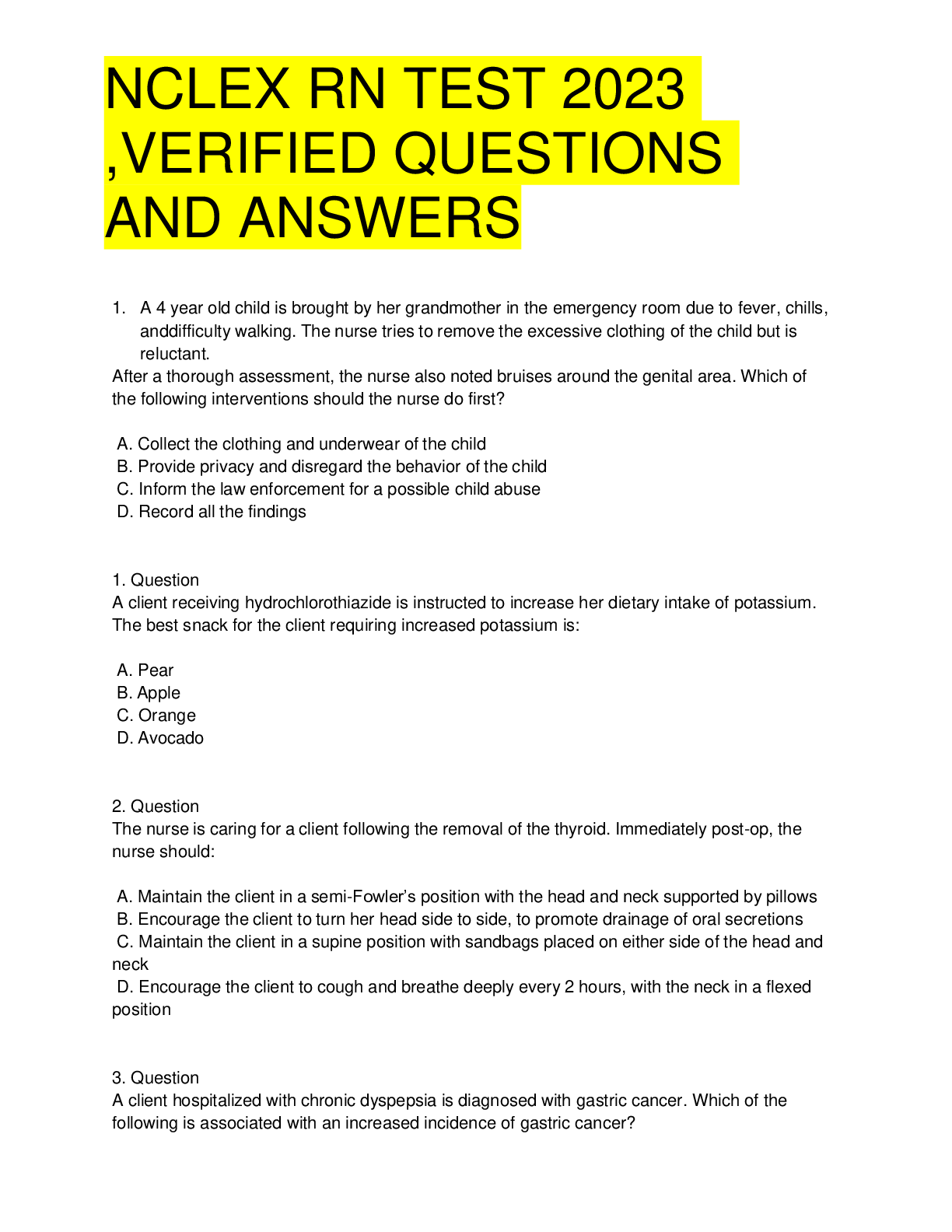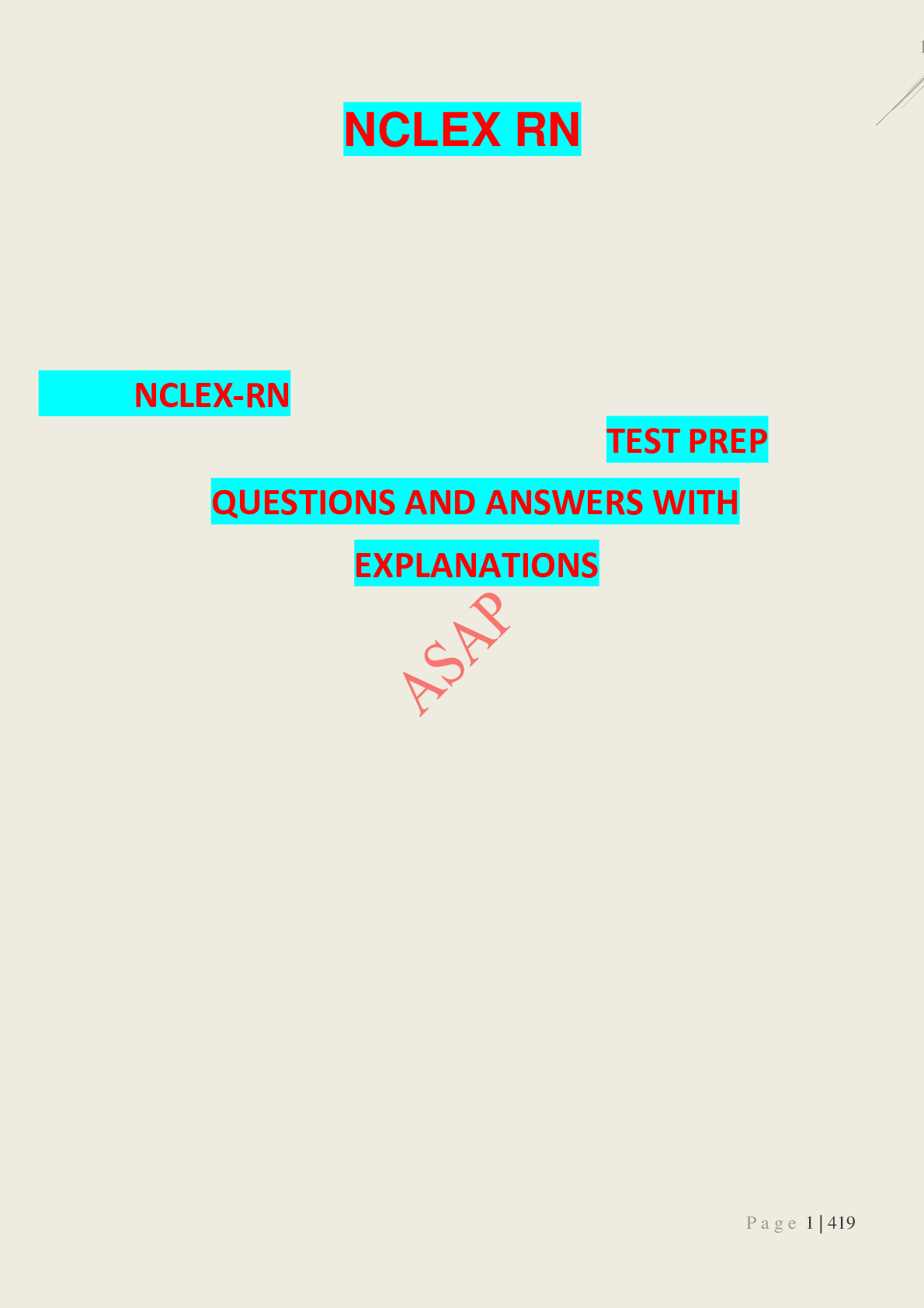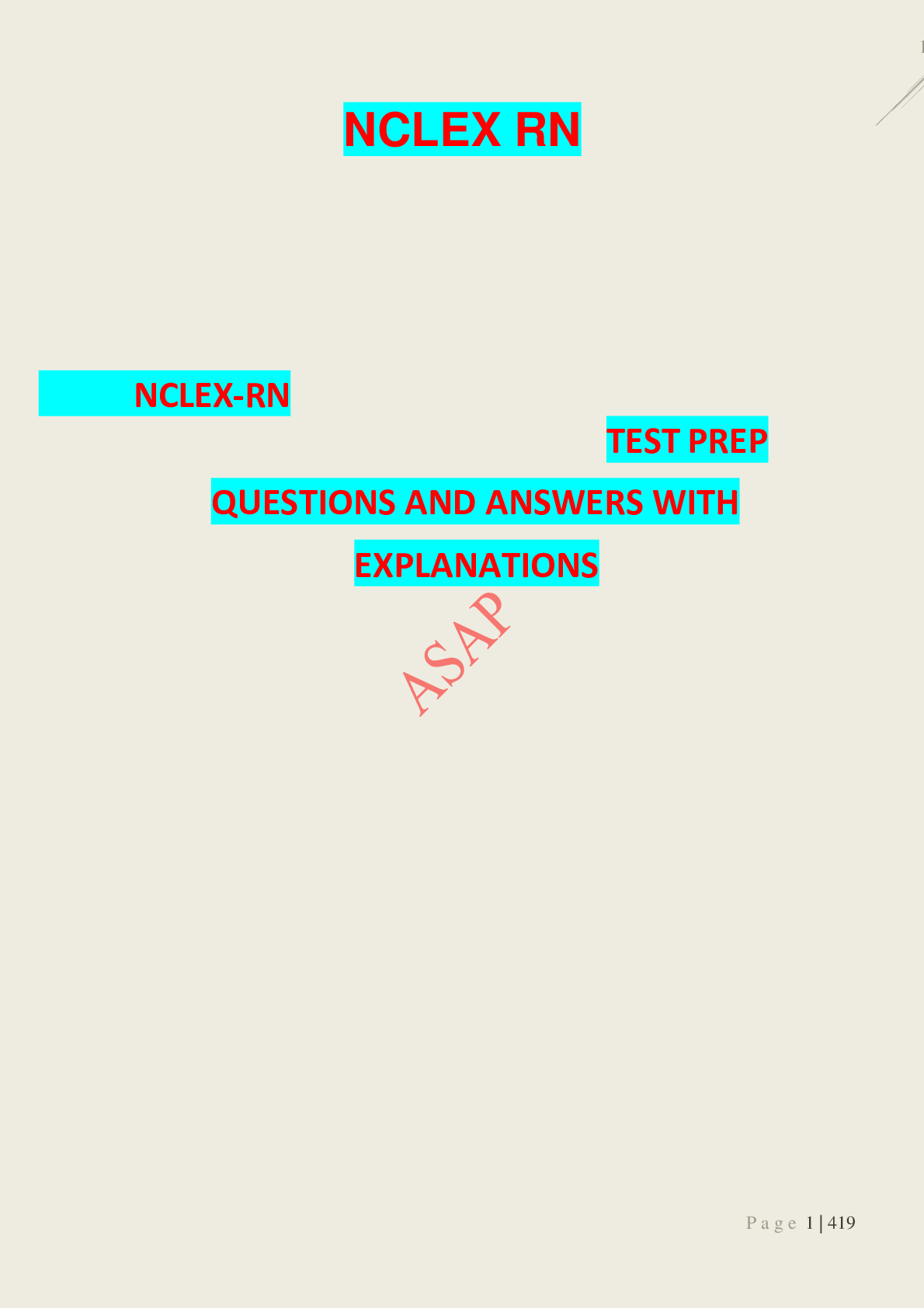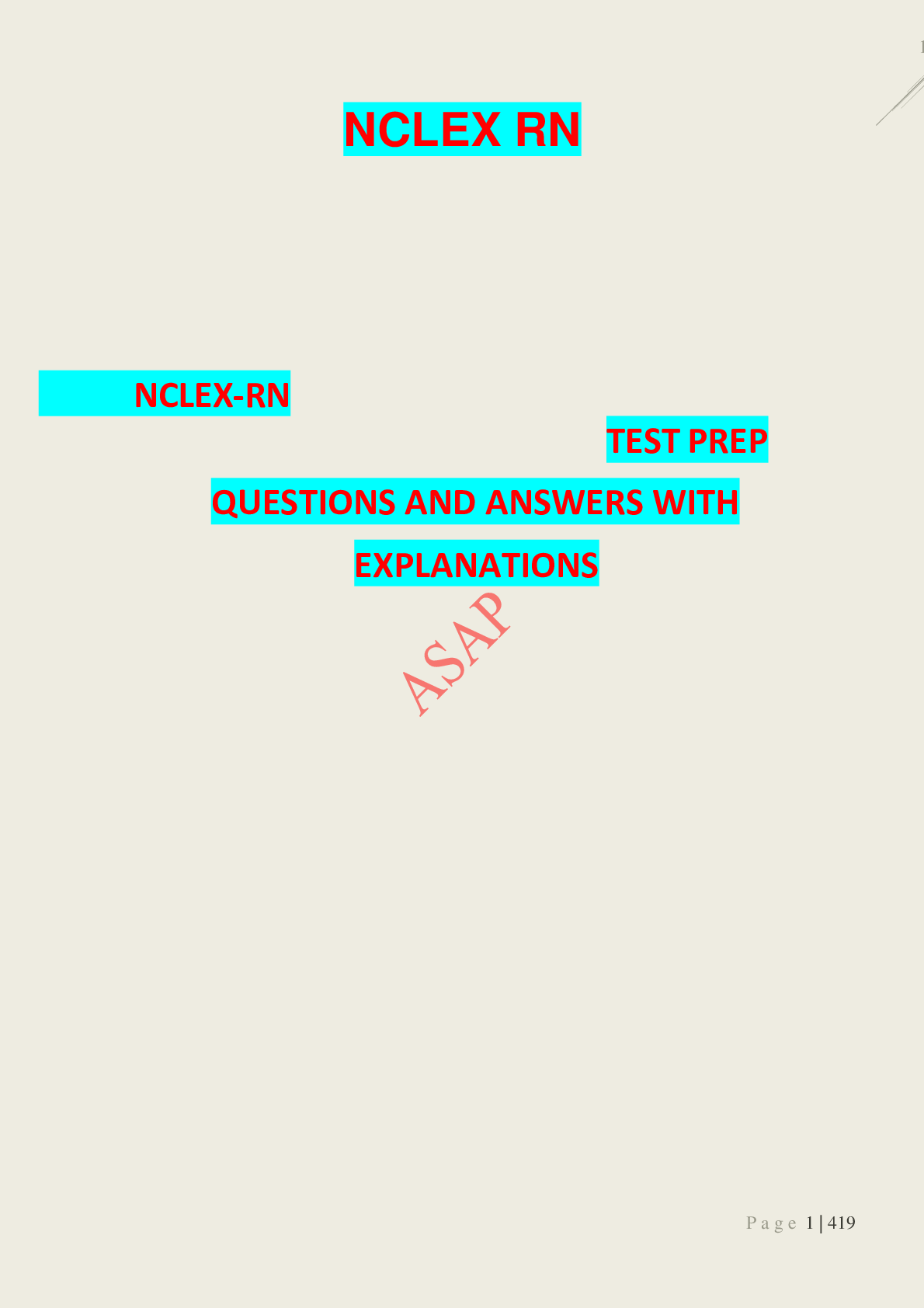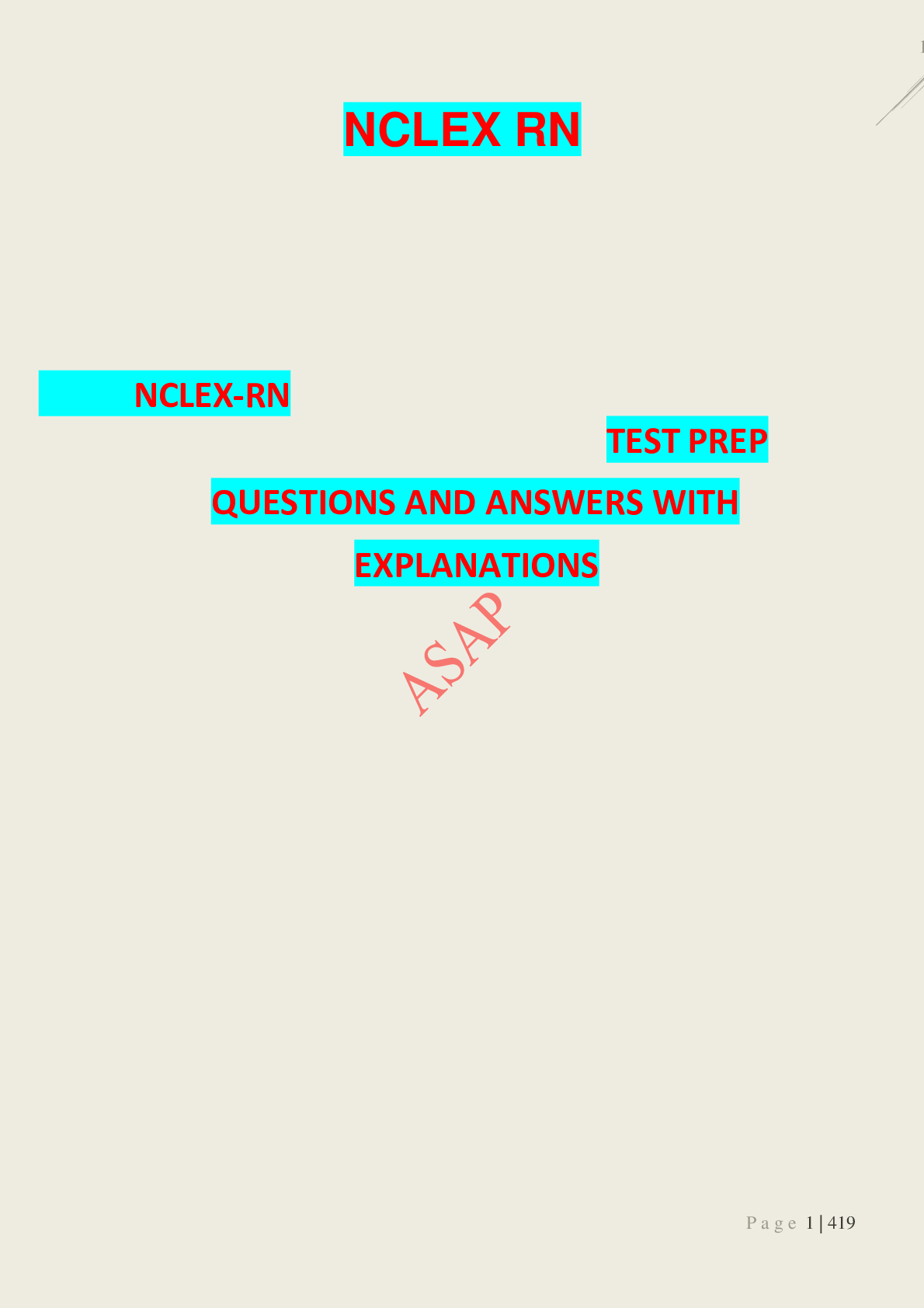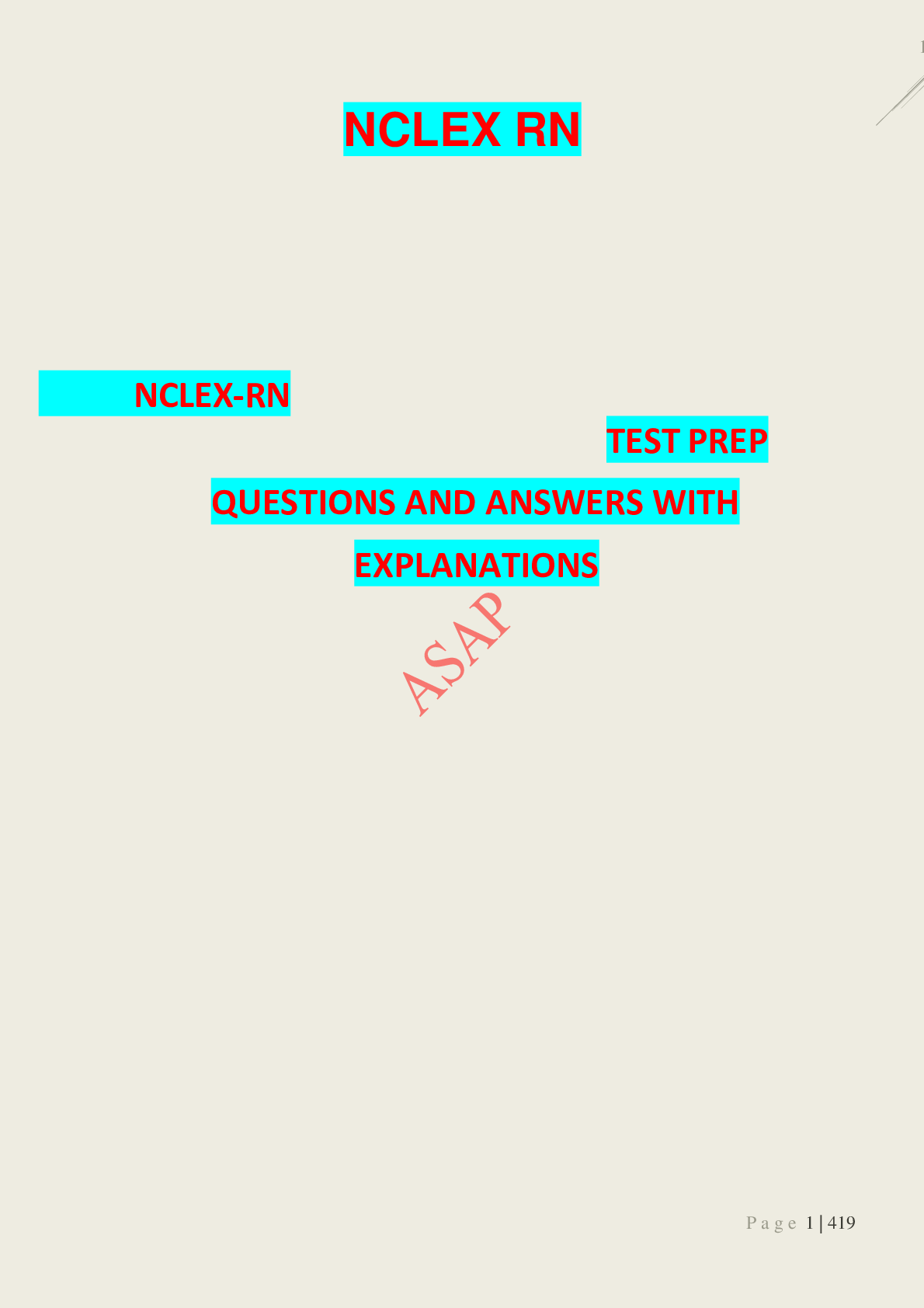*NURSING > EXAM > NURSING PRIORITIZATION, DELEGATION & ASSIGNMENT NCLEX RN TEST EXAM 50 Q&A’S WITH RATIONALES GUARAN (All)
NURSING PRIORITIZATION, DELEGATION & ASSIGNMENT NCLEX RN TEST EXAM 50 Q&A’S WITH RATIONALES GUARANTEED PASS | RATED A+
Document Content and Description Below
NURSING PRIORITIZATION, DELEGATION & ASSIGNMENT NCLEX RN TEST EXAM 50 Q&A’S WITH RATIONALES GUARANTEED PASS | RATED A+ 1. A 16-year old patient with cystic fibrosis is admitted with increased sho... rtness of breath and possible pneumonia. Which nursing activity is most important to include in the patient’s care? o A. Perform postural drainage and chest physiotherapy every 4 hours. o B. Allow the patient to decide whether she needs aerosolized medications. o C. Place the patient in a private room to decrease the risk of further infection. o D. Plan activities to allow at least 8 hours of uninterrupted sleep. Correct Answer: A. Perform postural drainage and chest physiotherapy every 4 hours. Airway clearance techniques are critical for patients with cystic fibrosis and should take priority over other activities. The Cystic Fibrosis Transmembrane Conductance Regulator defect causes mucus to become dehydrated. Secretions in cystic fibrosis are generally thick, sticky, and more difficult to clear. Frequent airway clearance is a mainstay in the treatment of acute exacerbations, as well as an integral part of health maintenance in cystic fibrosis. Option B: Although allowing more independent decision-making is important for adolescents, the physiologic need for an improved respiratory function takes precedence at this time. Collaborate with the client and staff to ensure that the schedule for therapy is amenable to all and does not interfere with meals, rest times, or medications. Option C: A private room may be desirable for the patient but is not necessary. Ensure that clients with CF are not cohorted. The cohorting of clients with CF is not recommended based on published CF Infection Control Consensus Guidelines. Option D: With increased shortness of breath, it will be more important that the patient has frequent respiratory treatments than 8 hours of sleep. Infection, inflammation, and mucous plugging will cause an increase in the respiratory effort to compensate for airway obstruction. As moving air into and out of the lungs becomes more difficult, the breathing pattern alters to include the use of accessory muscles and retractions. 2. A patient with a pulmonary embolism is receiving anticoagulation with IV heparin. What instructions would you give the nursing assistant who will help the patient with activities of daily living? Select all that apply. A. Use a lift sheet when moving and positioning the patient in bed. B. Use an electric razor when shaving the patient each day. C. Use a soft-bristled toothbrush or tooth sponge for oral care. D. Use a rectal thermometer to obtain a more accurate body temperature. E. Be sure the patient's footwear has a firm sole when the patient ambulates. Correct Answers: A, B, C, and E. All of the other instructions are appropriate to the care of a patient receiving anticoagulants. Risk for bleeding may arise in any condition that disturbs the “close circuit” integrity of the circulatory system. Bleeding is the primary complication of anticoagulant therapy and is a risk of all anticoagulants even when maintained within the usual therapeutic ranges. Option A: Educate the at-risk patient about precautionary measures to prevent tissue trauma or disruption of the normal clotting mechanisms. Information about precautionary measures lessens the risk for bleeding. Option B: Be careful when using sharp objects like scissors and knives. Use an electric razor for shaving (not razor blades). The patient needs to avoid situations that may cause tissue trauma and increase the risk for bleeding. Option C: Use a soft-bristled toothbrush and nonabrasive toothpaste. Avoid the use of toothpicks and dental floss. This method providing oral hygiene reduces trauma to oral mucous membranes and the risk for bleeding from the gums. Option D: While a patient is receiving anticoagulation therapy, it is important to avoid trauma to the rectal tissue, which could cause bleeding (e.g., avoid rectal thermometers and enemas). These invasive devices or medications may cause trauma to the mucous membranes that line the rectum or vagina. Option E: Educate the patient and family members about signs of bleeding that need to be reported to a health care provider. Early evaluation and treatment of bleeding by a health care provider reduces the risk for complications from blood loss. 3. A patient with acute respiratory distress syndrome (ARDS) is receiving oxygen by a nonrebreather mask, but arterial blood gas measurements still show poor oxygenation. As the nurse responsible for this patient’s care, you would anticipate a physician order for what action? [Show More]
Last updated: 9 months ago
Preview 5 out of 54 pages

Loading document previews ...
Buy this document to get the full access instantly
Instant Download Access after purchase
Buy NowInstant download
We Accept:

Reviews( 0 )
$15.50
Can't find what you want? Try our AI powered Search
Document information
Connected school, study & course
About the document
Uploaded On
Oct 21, 2024
Number of pages
54
Written in
Additional information
This document has been written for:
Uploaded
Oct 21, 2024
Downloads
0
Views
16


